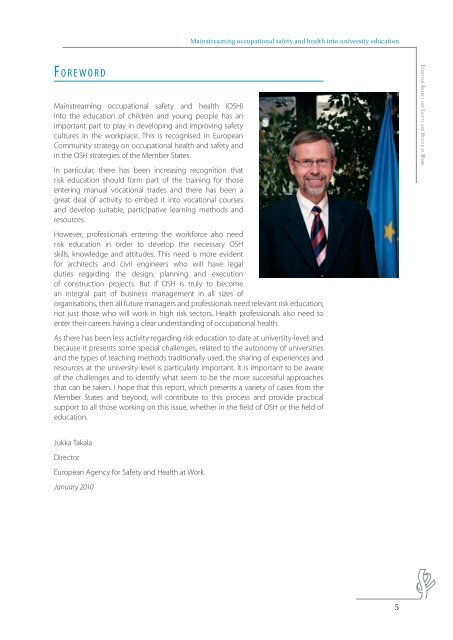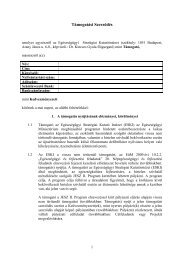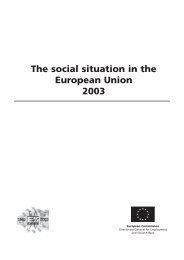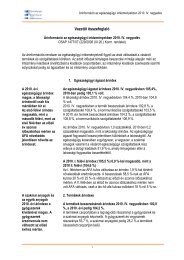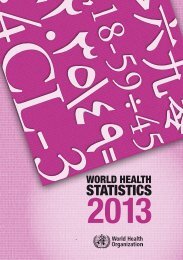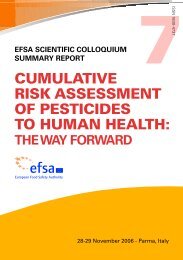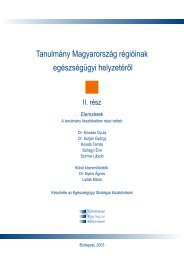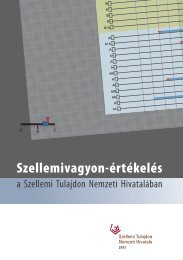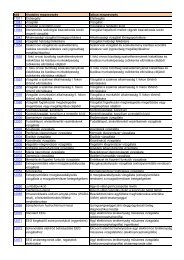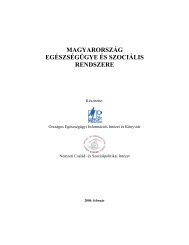Mainstreaming occupational safety and health into university ...
Mainstreaming occupational safety and health into university ...
Mainstreaming occupational safety and health into university ...
You also want an ePaper? Increase the reach of your titles
YUMPU automatically turns print PDFs into web optimized ePapers that Google loves.
<strong>Mainstreaming</strong> <strong>occupational</strong> <strong>safety</strong> <strong>and</strong> <strong>health</strong> <strong>into</strong> <strong>university</strong> educationF o r e w o r d<strong>Mainstreaming</strong> <strong>occupational</strong> <strong>safety</strong> <strong>and</strong> <strong>health</strong> (OSH)<strong>into</strong> the education of children <strong>and</strong> young people has animportant part to play in developing <strong>and</strong> improving <strong>safety</strong>cultures in the workplace. This is recognised in EuropeanCommunity strategy on <strong>occupational</strong> <strong>health</strong> <strong>and</strong> <strong>safety</strong> <strong>and</strong>in the OSH strategies of the Member States.In particular, there has been increasing recognition thatrisk education should form part of the training for thoseentering manual vocational trades <strong>and</strong> there has been agreat deal of activity to embed it <strong>into</strong> vocational courses<strong>and</strong> develop suitable, participative learning methods <strong>and</strong>resources.However, professionals entering the workforce also needrisk education in order to develop the necessary OSHskills, knowledge <strong>and</strong> attitudes. This need is more evidentfor architects <strong>and</strong> civil engineers who will have legalduties regarding the design, planning <strong>and</strong> executionof construction projects. But if OSH is truly to becomean integral part of business management in all sizes oforganisations, then all future managers <strong>and</strong> professionals need relevant risk education,not just those who will work in high risk sectors. Health professionals also need toenter their careers having a clear underst<strong>and</strong>ing of <strong>occupational</strong> <strong>health</strong>.As there has been less activity regarding risk education to date at <strong>university</strong>-level; <strong>and</strong>because it presents some special challenges, related to the autonomy of universities<strong>and</strong> the types of teaching methods traditionally used, the sharing of experiences <strong>and</strong>resources at the <strong>university</strong>-level is particularly important. It is important to be awareof the challenges <strong>and</strong> to identify what seem to be the more successful approachesthat can be taken. I hope that this report, which presents a variety of cases from theMember States <strong>and</strong> beyond, will contribute to this process <strong>and</strong> provide practicalsupport to all those working on this issue, whether in the field of OSH or the field ofeducation.E u r o p e a n Ag e n c y f o r Sa f e t y a n d He a l t h a t Wo r kJukka TakalaDirectorEuropean Agency for Safety <strong>and</strong> Health at WorkJanuary 20105


